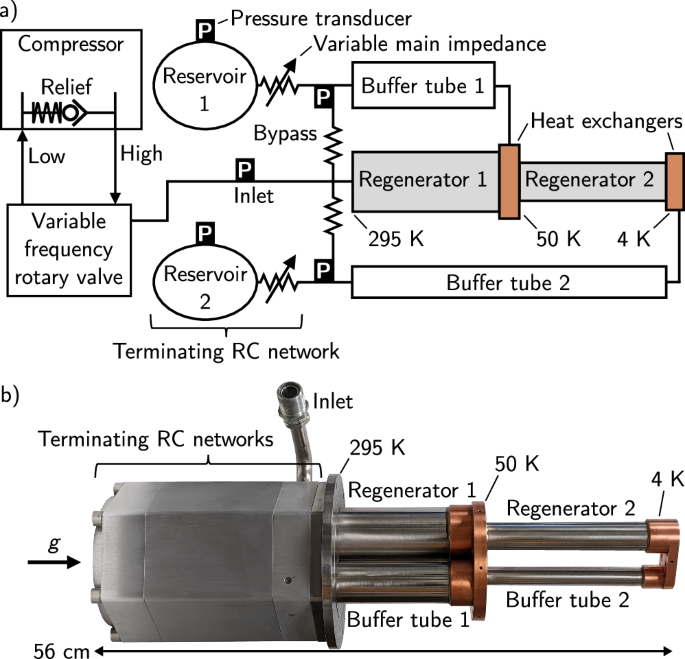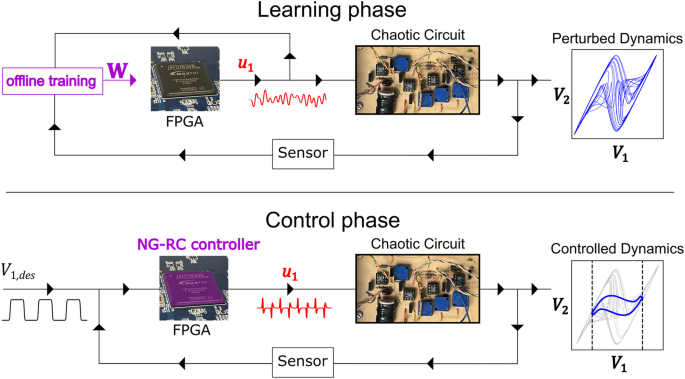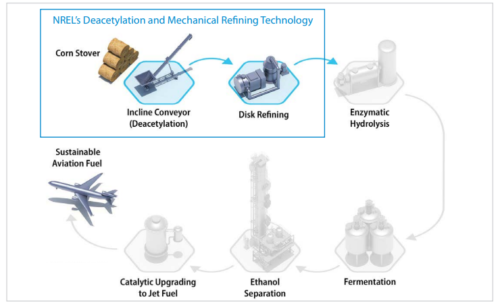2024-04-23 アメリカ合衆国・国立標準技術研究所(NIST)

・ NIST が、従来よりも大幅に少ないエネルギーと短い時間で絶対零度より数℃高い温度に冷却できる、パルス管冷凍機(PTR)を開発。
・ 研究・産業用の一般的な PTR を改良した新 PTR のプロトタイプでは、年間約 2,700 万 W の電力、3,000万ドル分の世界の電力消費量と、オリンピックの競泳プール 5,000 個分の冷却水の節約が期待できる。
・ 超低温冷凍機は、量子ビット(量子コンピューターの情報の基本単位)の安定化や、材料の超伝導特性の維持、NASA ジェームズ・ウェッブ宇宙望遠鏡の低温度での保持等、様々なデバイスやセンサーの作動に不可欠なもの。
・ 家庭用冷蔵庫がフロンを液体から蒸気に変えて熱を除去する方法のように、高圧ヘリウムガスの周期的な圧縮 (加熱) と膨張 (冷却) を通じて低温度冷却を行う PTR は、40 年以上にわたって利用されているが、電力消費量が多く、他の超低温冷却機に比べて電力消費量が多い。
・ PTR を詳細に調査したところ、メーカーは最終的な動作温度が 4 ケルビン (絶対零度より 4 度高い温度) でのみエネルギー効率が高くなるようにデバイスを製造していたことを発見。冷却のプロセスは室温から開始されるため、高温度では極めて効率が悪くなることが大きな問題となっている。
・ 一連の実験から、室温ではヘリウムガスが非常に高圧になっているため、その一部が冷却に使用されずにリリーフバルブへと分流することを確認。そのため、圧縮機と冷凍機の機械的な接続を変更してヘリウムが無駄にならないようにし、冷凍機の効率を大幅に向上させた。
・ 特に、圧縮機から冷凍機に流れるヘリウムの量を制御するバルブを継続して調整。バルブの開口部が室温下で広がった後、冷却が進むにつれて徐々に閉じて行くことで、冷却時間を現在の 1/2~1/4 に短縮できることがわかった。
・ 現在、量子回路の試験に 1 日以上の冷却時間を要しているが、新 PTR による冷却時間の短縮は、量子研究分野を含む多分野に広く影響を与える可能性がある。さらに、大型の PTR を、サポートインフラが不要な小型のものに置き換える可能性も期待できる。
・ 商業化に向けて産業パートナーと協働中。本研究は、コロラド大学と NIST 間の Professional Research Experience Program が支援した。
URL: https://www.nist.gov/news-events/news/2024/04/big-quantum-chill-nist-scientists-modify-common-lab-refrigerator-cool
<NEDO海外技術情報より>
関連情報
Nature Communications 掲載論文(フルテキスト)
Dynamic acoustic optimization of pulse tube refrigerators for rapid cooldown
URL: https://www.nature.com/articles/s41467-024-47561-5
Abstract
Pulse tube refrigerators are a critical enabling technology for many disciplines that require low temperatures. These refrigerators dominate the total power consumption of most modern cryostats, including those that reach millikelvin temperatures using additional cooling stages. In state-of-the-art commercial pulse tube refrigerators, the acoustic coupling between the driving compressor and the refrigerator is fixed and optimized for operation at base temperature. We show that this optimization is incorrect during the cooldown process, which results in wasted power consumption by the compressor and slow cooldown speed. After developing analytic expressions that demonstrate the need for acoustic tuning as a function of temperature, we dynamically optimize the acoustics of a commercial pulse tube refrigerator and show that the cooldown speed can be increased to 1.7 to 3.5 times the original value. Acoustic power measurements show that loss mechanism(s)—and not the capacity of the compressor—limit the maximum cooling available at high temperatures, suggesting that even faster cooldown speeds can be achieved in the future. This work has implications for the accessibility of cryogenic temperatures and the cadence of research in many disciplines such as quantum computing.



